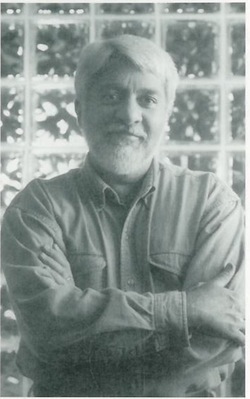The Shining Shining Path
Carroll Dale Short
Black Belt Press: Montgomery, Alabama, 1995.
400 pp.,$25.00 (cloth).
Like light, Buddhism is refracted by the cultures it passes through, emerging in a rainbow of forms, yet retaining its essential nature. The same holds for Buddhist art and literature, which varies from sumi-e ink painting in Japan to the elaborately colorful images of Tibetan thanka paintings. As Buddhism continues in its slow passage through American culture, what forms will its an and literature take? The Beastie Boys have already given us Buddhist rap. Will we now see Buddhist mysteries, Buddhist space operas, potboiling Buddhist romans à clef?
Spearheading the genre-fication of American Buddhist literature comes an exuberant Tibetan Buddhist-oriented novel of dark fantasy, Dale Short’s The Shining Shining Path. Set in a universe where moral laws can supersede natural ones, and in which the forces of evil threaten to run rampant, it is reminiscent of the novels of Clive Barker and Dean Koontz. And its hero isn’t an ordinary human being but one graced with special powers.

Turner (in proper superhero style, he has only one name) is “the Hope,” the latest link in an ancient chain of Hopes—the single human being of each generation who, according to a legend that author Short ascribes to Tibetan Buddhism, can defeat the evil forces of the “realm.” An American who practices Tibetan Buddhism, Turner spent time at Tibet’s Drepung Monastery twenty years ago while convalescing from wounds suffered in Vietnam. In subsequent years, Turner has become America’s foremost promoter of rock concerts. Recently, however, he has been called back to Drepung and told to prepare for his destiny. As the novel opens, he is leading a group of Drepung monks on a tour of Tibetan sacred music and dance through the American South, getting ready for his upcoming battle with the forces of the realm.
The popular romantic image of Tibet as a land of magic and mystery colors the entire narrative. The monks who accompany Turner include one old fellow who is an adept at teleponation, which leads to legal complications when he inadvertently transports himself naked into the bedroom of a young girl. The head monk at Drepung is as likely to communicate through telepathy (“Greetings and all love from your brothers at Drepung “) as by any other means. Turner’s former comrade-in-arms, an African American named James Crowe, has special powers of his own: like the more highly trained monks, he is able to manipulate natural law, in his case through quantum equations—whereby, for instance, he is able to erase from the record of the past the old monk’s importune visit to the girl’s room. Also aiding Turner is his girlfriend of long ago, Cassie, the hinge on which several plot twists turn. She, too, is touched by supernatural graces. Together they engage in skirmishes of increasing violence against an evil force that manifests itself in a series of tangible forms, including an ebony-colored aircraft that nearly sends Turner and company crashing to their deaths.
All these cosmic fireworks may sound outrageous, and indeed they are, but no more so than the images on traditional Tibetan tangkas, which are rife with six-armed deities, demons, hungry ghosts, ogres, and so on. Tibetan art and literature have always embraced the furthest reaches of human imagination, and The Shining Shining Path is very much in this spirit—with one glaring exception. For all of the flaring excess of Tibetan Buddhist art, it is grounded in the act of meditation, the stillness and concentration of mind from which its multiple visions arise. Regrettably, meditation gets scant attention. Short’s novel seems more intent on celebrating the ever-shifting parade of phenomena than on studying the nature of the mind that perceives it.
As entertainment The Shining Shining Path is a treat. Its characters are flesh and blood, its pacing swift, its plotline a lasso roping in the reader at once. Always seductive, sometimes profoundly moving, it celebrates the redemptive power of sacrifice and love. Only the “Calling Out”—the final battle between Turner and the realm—disappoints, a hazy series of mind-battles that don’t quite come alive.
Above all, this is a novel of genuine respect and love for Tibet and its heritage (“a race of people whose artists and athletes, saints and scientists and warriors are one and the same in intent; a civilization whose single transcendent striving is the painstaking eradication of self”). Short cast his monks as fully human, yet as spiritual heroes, and he rewards them as we may secretly wish heroes would be rewarded: on the inner plane with understanding, on the outer plane with adulation. Time and again, the touring monks play before skeptical, even hostile, audiences and emerge triumphant. They prove so successful, in fact, that they win a major recording contract and become media darlings.
Of course, it’s all fantasy; Tibetan monks have toured America without gaining the cover of Rolling Stone. Yet there is something deeply satisfying about reading a scenario in which the good guys are victorious, in which the central figure rakes on the challenge of a lifetime, defeats inner and outer demons, and emerges whole, a dharma icon for modern America, the very image of Mighty Morphin Power Buddhist.
Jeff Zaleski, a Consulting Editor to Tricycle and a Contributing Editor to Publishers Weekly, is the co-author, with Tracy Cochran, of Transformations: Awakening to the Sacred in Ourselves (Bell Tower/Crown).